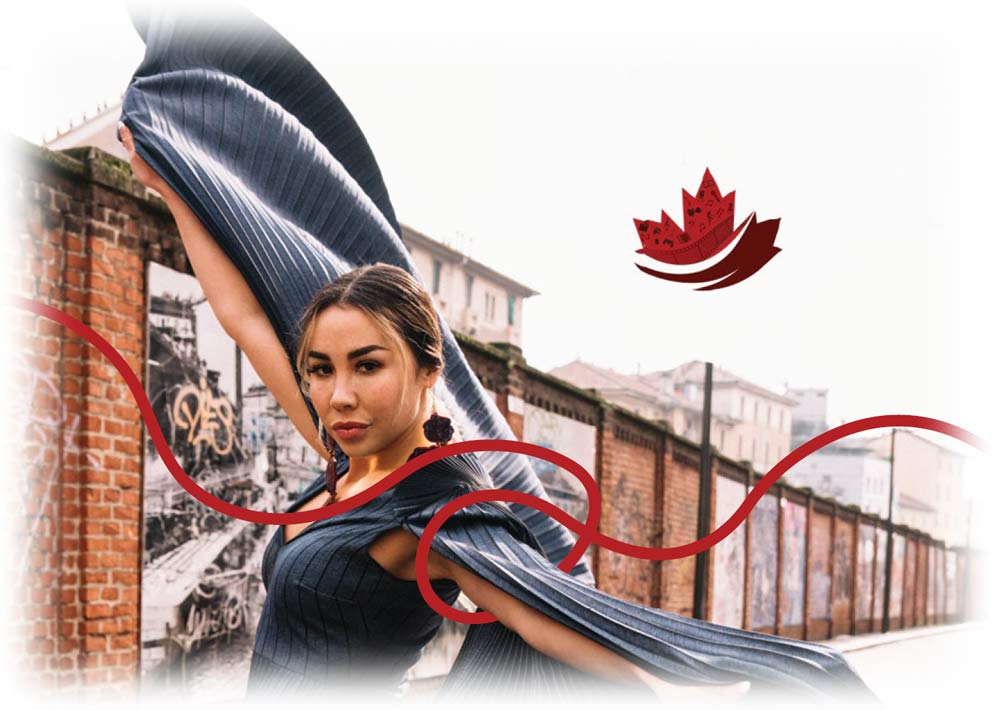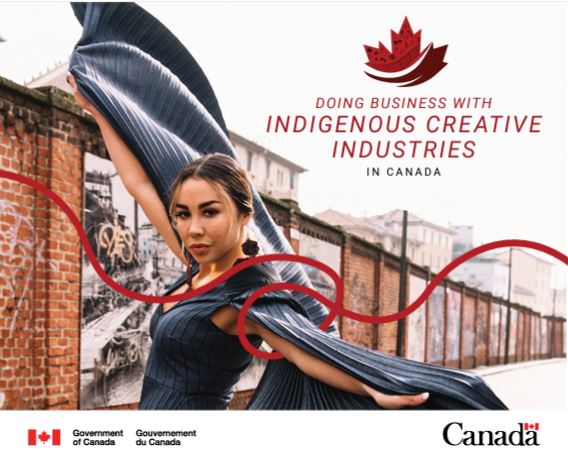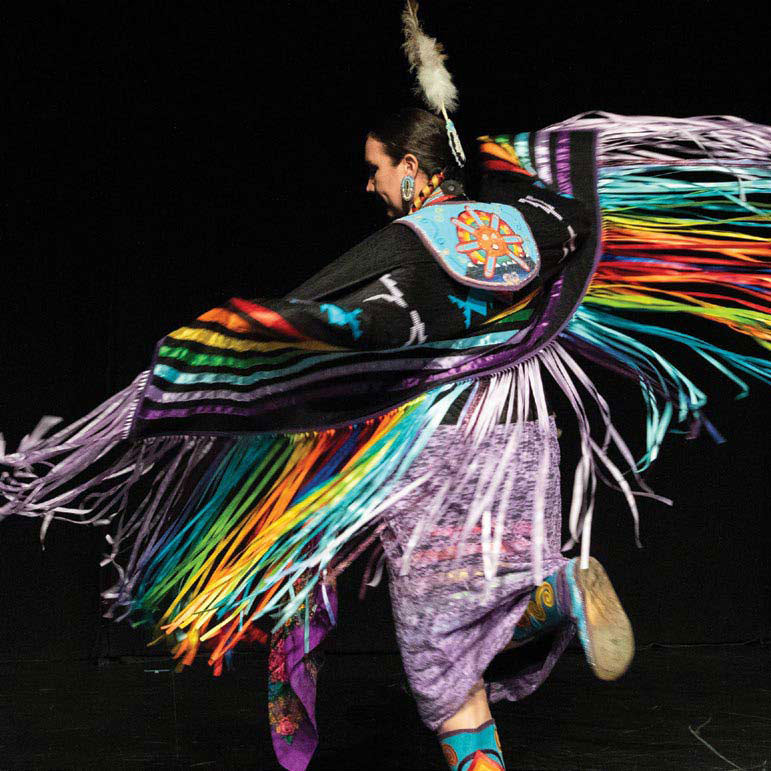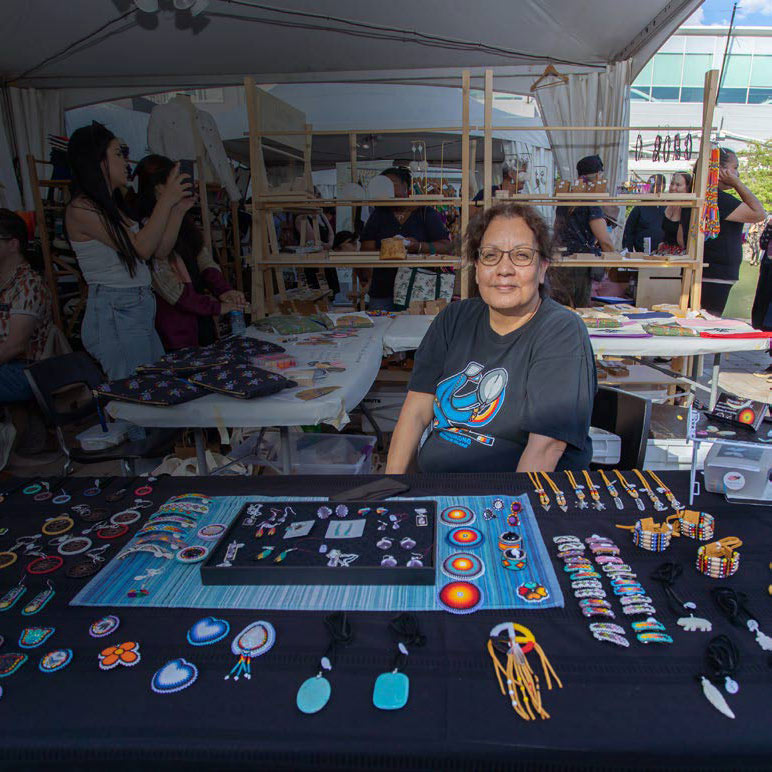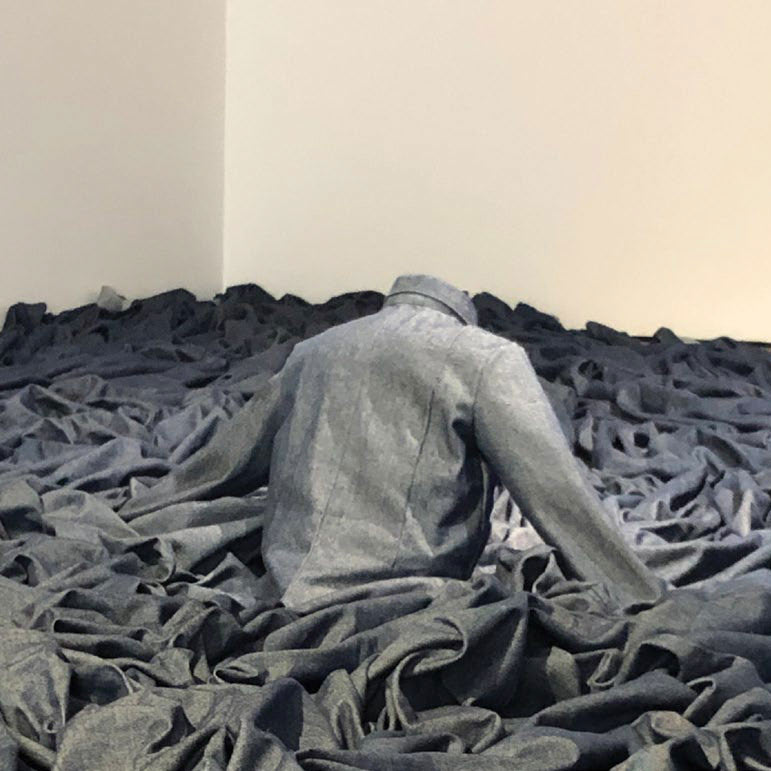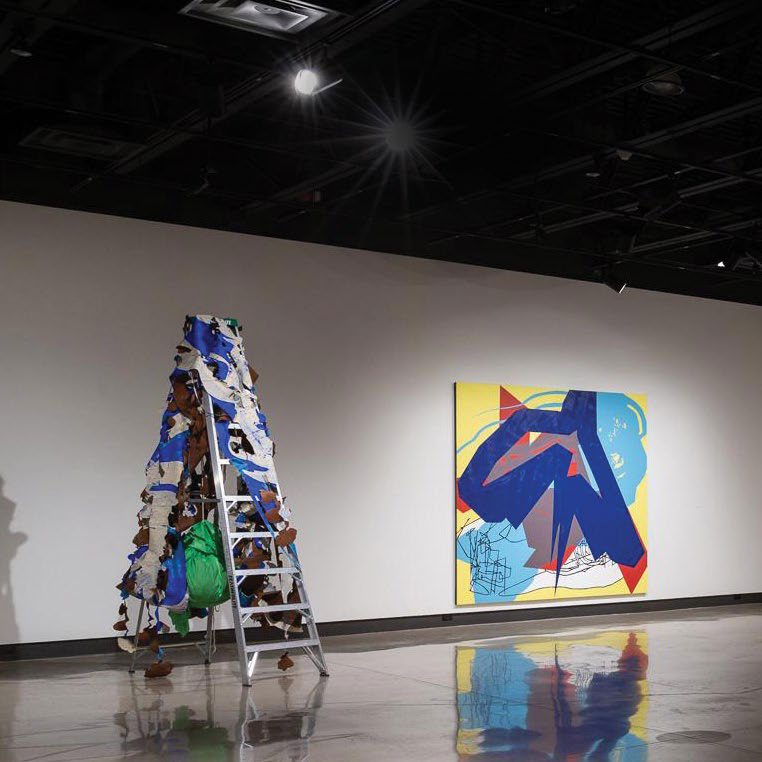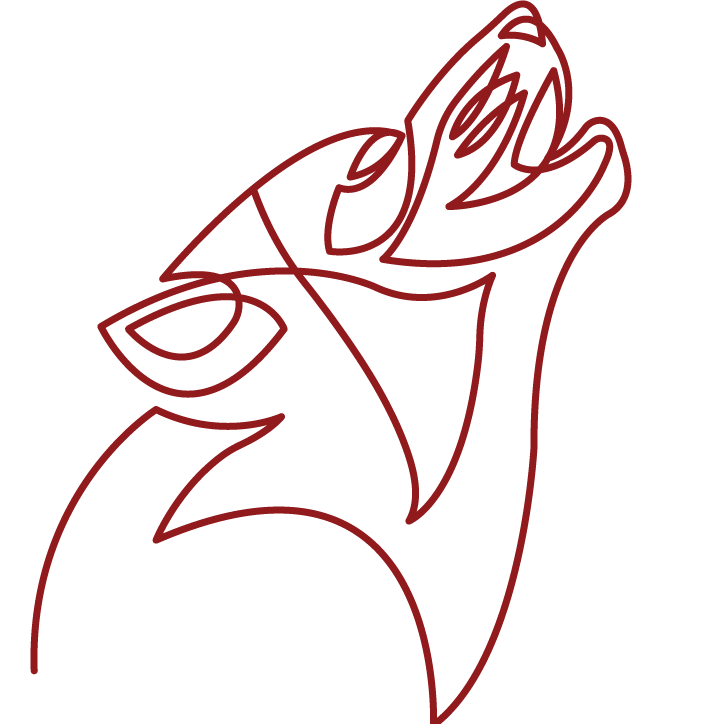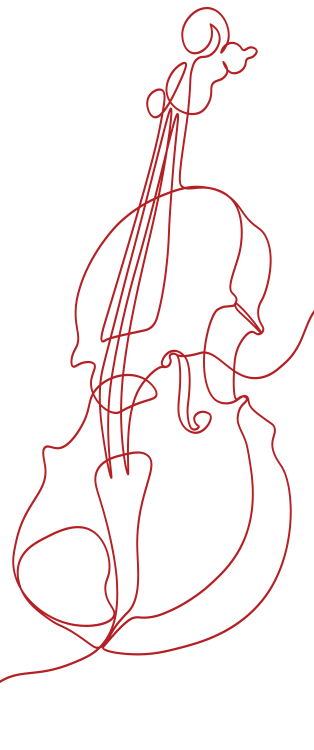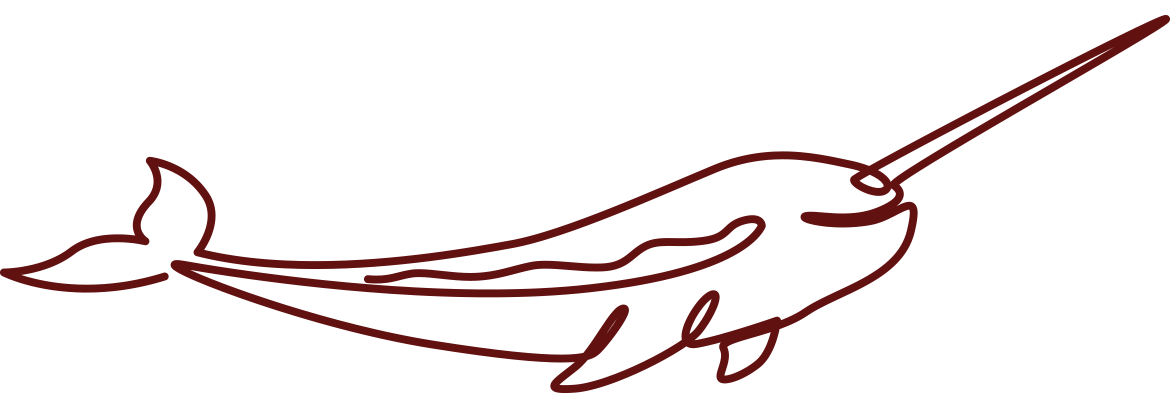Doing business with Indigenous creative industries in Canada
On this page
Preface
This publication was developed by the Department of Canadian Heritage (PCH) as part of its activities under the Creative Export Strategy, whose goal is to help Canadian creators achieve their international business objectives.
Between June 2021 and March 2022, PCH hosted a series of feedback sessions to understand how the Strategy could better respond to the creative sector’s diverse needs and export barriers. At the session dedicated to Indigenous creative entrepreneurs, participants shared that, during the conduct of international business activities, they experienced a lack of cultural awareness and sensitivity on the part of international buyers and potential partners.
To address these concerns, PCH developed this publication in collaboration with an Indigenous advisory panel. The goal is to help foster more positive interactions between international buyers and Indigenous creative industries in Canada, and to help prospective international business partners better understand the business contexts and world views of Indigenous peoples in Canada.
Acknowledgements
We would like to acknowledge Marcia Nickerson for holding the pen on this publication, along with the following Indigenous creators, artists and arts leaders for their guidance and contributions: Denise Bolduc, Louise Flaherty, Alan Greyeyes, Gabrielle Hughes, Sandra Laronde, Maize Longboat, Sage Paul, Chelsa Racette (Reil), Sara Roque, as well as Camille Usher and the artists whose work is illustrated in this publication. (Sara Roque sadly passed away before the completion of this publication. She was an Anishinaabekwe creator, leader, activist, advocate and mentor and we are forever grateful for her important contribution).
The federal government also acknowledges that Indigenous peoples are the original inhabitants of the land that is now Canada and have been here since time immemorial. They formed complex social, political, economic and cultural systems before Europeans came to North America. Despite efforts from colonial forces to extinguish culture, language, their society and way of life, the First Nations, Métis, and Inuit peoples continue to grow and thrive. We encourage you to take your own learning journey to get to know more about Canada's Indigenous peoples.
Purpose of this guide
-
Educate international buyers
-
Encourage meaningful partnerships and relationships with Indigenous creative businesses, artists and creators
-
Support the protection of Indigenous arts and cultural expression
Creative industries are thriving amongst Indigenous communities throughout Canada and continue to garner interest internationally. Indigenous works are amongst the most exciting work of this land from the Original Peoples of this land.
This introductory guide is intended to inform prospective international partners, buyers and businesses about the business practices and etiquette of Indigenous creative industries in Canada. It provides a high-level overview of Indigenous artistic processes, business practices, and relationship contexts. We have also included numerous links to additional sources of information that will help educate and prepare you for appropriate and successful business transactions.
With the information in this guide, international business partners will have a better understanding of how to effectively work and communicate with Indigenous artists and creators in getting these amazing products to market. This knowledge will enhance relationships between international partners and Indigenous businesses, artists and creators by fostering a deeper understanding of the cultural context for doing business.
Things to know
What do you gain as a buyer?
Quality and authenticity to begin with. The current generation of consumers and audiences concern themselves with the origin, ethics, social impact and story behind the products they are consuming. The authenticity of Indigenous work speaks for itself. Indigenous art tells a story, shares history and culture, and often follows a sustainable value chain concerned with both environmental and social impact.
Tip:
Being informed about topics impacting Indigenous art practices and sales, such as cultural appropriation or differences in world views, can have a positive effect on business processes, decision-making, and ultimately contribute to more meaningful business relationships.
What is Indigenous Art?
“Simply, a work is Indigenous when it is created by an Indigenous artist, regardless of theme or topic. A story is Indigenous whether it comes from ancestral knowledge, lived experience or imagination. ‘Indigenous music” is not a genre, and Indigenous music should not be considered ‘world music’. Indigenous music can be expressed through any genre or combination of genres and is in fact giving rise to entirely new and unclassifiable forms of musical expression.”
Tip:
Storytelling is essential to Indigenous cultures. Story is also the foundation of creative industries, whether it be publications, songs, or films. Stories are perpetuated by Elders through telling of oral histories, and they are also brought to the fore by Indigenous artists and creators through their work across all mediums and formats.
Use of the term Indigenous
The terms 'Aboriginal' (as found within the Canadian Constitution) or 'Indigenous' (as recognized by the United Nations), 'First Nations’, ‘Métis’ or ‘Inuit’ are often used to distinguish the First Peoples in Canada for the purpose of government policy, law and business interactions. While government terminology has changed several times, Indigenous peoples prefer to be referred to by their Nation (e.g., Mi’kmaq, Ojibwe, Haida, Innu, Dakota). Not only is Canada one of the most diverse countries, but Indigenous populations are also diverse. This diversity is reflected in over 70 Indigenous languages that were reported during the 2021 federal census. Understand that each Nation will have different forms of governance and diplomacy.
Tip:
Determine the Nation of the business partner or artist you are interested in, and out of respect, refer to the proper Nation(s) in discussion. Using the appropriate pronunciation of names and Nations is a sign of respect. Ask for the correct pronunciation if need be.
What is traditional knowledge?
“Traditional Indigenous Knowledge — which includes how to make certain items, who can make those items, what materials and representations are appropriate, and what their meanings are — are not authored or owned by individuals. This is shared Knowledge carried by Keepers through countless generations. Knowledge, and its use, is a responsibility, rather than property. Traditional Knowledge includes collective rights to histories, stories, crests, symbols, songs, dances, or related artworks and utilitarian belongings.”
Understand traditional cultural expression and intellectual property
The United Nations Declaration on the Rights of Indigenous Peoples (UNDRIP), which Canada ratified in 2021, states that Indigenous peoples have the right to practice and revitalize their cultural traditions and customs. For an in-depth look at how these issues impact Indigenous creative industries you can refer to: Promoting and protecting the arts and cultural expressions of Indigenous peoples (ifrc.ca).
Watch this 5-minute video from the World Intellectual Property Organization
Expect diversity in practice
In doing business with Indigenous creatives, you may be astounded at the abundance of styles and variety of designs – both traditional and not – that are practiced throughout Canada. While some artists may be trained in and incorporate customary practices, such as hide tanning or hand drumming, which are passed down through generations by family oral teachings and activities, others may not. Some artists may be trained in and informed by contemporary practices and spaces; others may connect with both worlds. In either instance, do not be surprised if Indigenous works do not reflect some of the images that you are used to – such as beads and feathers. Rather, embrace that artists are breaking stereotypes and imagining Indigenous futures.
Tip:
Contemporary artists may not use traditional practices or styles.
Understand complexities in identity
Indigenous identities have historically been disrupted by government policies and laws suppressing language and culture and removing children from their families. Residential schools, relocation, adoption, and the foster care system have disrupted community connections for many Indigenous peoples. Indigenous “identity” in Canada continues to be a contentious issue, both within Nations themselves and between Nations and the federal government.
In fact, there are numerous instances of non-Indigenous people misrepresenting themselves as Indigenous. "Identity theft" occurs amongst artists, academics, and those in community leadership roles. Concerns and anger arise when false claims of Indigeneity allow access to funding, resources, community, story and practice.
Tip:
To be respectful, the best way to approach an Indigenous person in Canada is to ask their Nation, or about their family ties. If they demonstrate difficulty in expressing their ties to a Nation or community, they may not be Indigenous. Do not ask blood quantum – this is considered offensive.
Things to do
Work with Indigenous-owned companies
There is a growing and diverse base of national and international audiences and consumers eager to experience Indigenous art or purchase Indigenous products. As markets expand, non-Indigenous businesses and organizations are attempting to capitalize on the burgeoning appeal. Often, in an international context, buyers are drawn to non-Indigenous companies with Indigenous projects – because those businesses are perceived as more established. This often disadvantages smaller Indigenous exporters that may not be registered as businesses but are entrepreneurs. Purchasing authentic Indigenous creations celebrates and preserves the creativity, history, language and culture of Indigenous peoples, while supporting the economic prosperity of Indigenous peoples across Canada.
Tip:
Typically, Indigenous businesses in Canada are majority owned and controlled by Indigenous individuals or communities (at a minimum 51% Indigenous-owned). This is one way to ensure that the business you are buying from is Indigenous-owned or Indigenous-led.
Support sovereign approaches
Indigenous artists and creatives are seeking and establishing “sovereignty” within the creative sectors. Culture is a fundamental underpinning of sovereignty and identity. It is important to recognize Indigenous ownership and control over their intellectual and cultural property, which includes having decision-making control over the funding and the creative sides of production, protecting cultural property rights and interests, and ensuring appropriate consents, access to, and control of cultural property.
Tip:
Indigenous storytellers are not looking for “diversity” consideration, but recognition of special rights flowing from their constitutional status as founding nations of Canada. “Controlling the narrative” is of utmost importance, from the point of creation to expression, right down to marketing.
Respect cultural protocols
Respecting traditions and cultural protocols also means respecting the privacy of sacred, secret or sensitive knowledge, culture and objects. Learn what is appropriate and what is comfortable and accept that NO is a valid response. This may include not touching drums, regalia, or hair and other issues around personal contact; not photographing or shooting during ceremony; or when and when not to have alcohol present. Accessing and following Nation protocols often means extra work and due diligence for Indigenous artists and creators. This is one way that Indigenous creators are accountable to their communities.
Tip:
Each Nation has its own customary laws and traditions that should be respected. Work with Indigenous Creators to ensure Nation protocols are respected.
Follow contemporary references for working with Indigenous art(ists)
Artists and arts leaders are seeking to establish new industry practices, policies, and regulations to accommodate the unique circumstances of Indigenous creators. The development of standards and guidelines is an emerging practice within creative sectors and an attempt to mitigate historic missteps. These resources serve as a pathway to community and nation protocols and customs.
Resource: On Screen Protocols and Pathways: A Media Production Guide to Working with First Nations, Métis and Inuit Communities, Cultures, Concepts and Stories (Indigenous Screen Office)
Tip:
Ensure that access to traditional knowledge and practice is correctly attributed, and benefits flowing from the use of these stories and knowledge is shared with the appropriate individuals and communities.
Ensure applicable copyrights exist
Ongoing appropriation has resulted in the need to protect Indigenous Knowledge (be it medicines, ceremonies, songs, or symbols) from mass production, misuse, and commercialization. International and Canadian copyright laws do not always align with Indigenous perspectives around concepts of cultural property, which is often communally held. Intellectual property (IP) rights are already complex and can become more challenging when issues of collective, or community-based, rights are brought forward.
Resource: Introduction to Intellectual Property Rights and the Protection of Indigenous Knowledge and Cultural Expressions in Canada (ISED Canada)
Respect community relationships
“We may come up against producers that do not understand or care that we have relationships with communities, and how we engage with communities is just as important as how we engage with the funders. There is a hierarchy in everyone’s mind of who is more important, which creates a clash between values of industry and community. Having a values-driven production means that Indigenous values are at the top of the hierarchy. If questions come up, business is prioritized in a much different way. What I learned is the most important clauses are who has decision-making power about what.”
Tip:
For many Indigenous artists and creators, community takes priority. Impacts on community, participation of community, and giving back to community will likely factor into your business discussions. If you are attempting to incorporate Indigenous realities and perspectives, think communally and focus on reciprocity in relationships.
Things to avoid
Do not appropriate
Cultural appropriation is extraction without permission, for financial benefit, an infringement of copyright and/or any other form of unauthorized use of Indigenous artistic work. This includes design, story, thought, identity and culturally distinct items. Theft and misrepresentation lead to Indigenous arts being devalued, perpetuation of harmful stereotypes, and damage for creative industries and artists.
Resources:
- Think before you appropriate: Things to know and questions to ask in order to avoid misappropriating Indigenous cultural heritage (Simon Fraser University)
- This Indigenous Arts Protocol video and transcribed dialogue (PDF format) relate to the topic of cultural appropriation in the arts and include an in-depth discussion of the meaning and application of protocols by Indigenous artists from a number of disciplines (Ontario Arts Council)
Tip:
Permissions often need to be sought from an appropriate source which may include the creator or creator’s family, a specific community or Nation, or their respective decision-makers.
Do not commodify
The Indigenous worldview of art is substantially different and unique. Unfortunately, Indigenous artistic practices are often trivialized. The making of cultural products like visual art, beadwork, clothing, music and film are highly skilled and valuable practices that have been passed down for generations. Creative processes are complex and layered, involving research, cultural/knowledge teachings, protocols, permissions, and engagement. The process can be time-consuming, emotional, and rewarding. For Indigenous creators, exchanging knowledge, providing opportunities to community members, accountability and good relationships may be as important as financial success.
Tip:
Tip: Do not attempt to commodify cultural products or practices. This is considered offensive.
Do not tokenize
“Since colonization, cultural, monetary and functional value of Indigenous-made works has been reduced to digestible and kitschy commodities or tokens. This impacts Indigenous artists today by having only token spaces to present or retail their work in, competing with a market of inauthentic Indigenous-inspired works, stereotypes or goods at much lower costs, or being forced to create works within Eurocentric standards to be recognized as a legitimate artist.”
Tip:
Recognize Indigenous talent and respect Indigenous contributions. Approach business relationships with a sense of reciprocity. Investing in each other is an aspect of developing a mutual relationship.
Building respectful relationships
As an international buyer or investor, be mindful in your interactions with Indigenous peoples that your values and business practices may be different. Building on the basics in the first section, this section explores some specifics of business etiquette and considerations to ensure positive interactions.
Indigenous creative industry business practices are about more than exchanging money or generating income. Indigenous economies of trade were traditionally reciprocal and still often centre around the family and community as opposed to a company or individual. Barter and trade of goods or skills is often used in place of money, and the benefits to family, community and nation are as important as financial gain. In other words, measurements of success are not always monetary. Giving is part of the economy. It is often said, if someone benefits, we all benefit. Whether it is taking care of people in need, or actively nurturing the next generation, giving back is important to most Indigenous creators.
Resource (video): Indigenous Economic Reconciliation (University of Victoria)
Before engaging with prospective partners or suppliers
Indigenous creators and artists are often asked to educate business partners on cultural matters. This ultimately takes away focus and time from their own practice, not to mention the work is generally unpaid.
-
Acknowledge how the Indigenous view of business is different from your own.
-
Seek any additional information on your own. Do some research.
-
Be sure you can pay fair value for goods and compensation for time and work.
Initial interactions
Keep in mind approaches that are less transactional and more relational to ensure reciprocal benefits for both parties.
- Building trust before entering into any arrangements is a must. Building trust will not happen in one meeting.
- Meeting in person is considered very important - this may mean expecting higher travel costs.
- Think about the possible impacts on the future and nurturing future generations.
- Be as straightforward as possible. Be transparent about your business or project. Share information freely.
- Review agreements to ensure the inclusion of what is important from the artists’ perspective.
Be mindful of your hosting responsibilities
While business culture may be concerned with the bottom line, Indigenous artists and creators are more focussed on creative and cultural processes.
- Introductions are important and take time. Many Indigenous people will introduce themselves by where they come from, who their relatives are, and speak to some of the history of their territory or the history of their people.
- Taking care of Elders is a priority. This may include providing a support person, an honorarium, a gift, as well as food, transportation, and medicines. This is how we demonstrate respect. When in doubt ask what is appropriate.
- Gift exchange is an aspect of many Indigenous cultures. Understand the giving culture of a particular Nation and ensure that the appropriate gifts are given to the appropriate recipients. Giving and receiving is a demonstration of respect for a person’s time, knowledge and skills.
Resource: Guidelines for Working with First Nation, Metis and Inuit Elders and Knowledge Keepers (Carleton University)
Communication Styles
Due diligence is highly recommended in the use of media and social media platforms – misuse can have a detrimental impact on businesses and relations.
-
Many Indigenous creators, artists and Elders convey messages through story. Listening without interruption is how we demonstrate respect. Be patient.
-
There are more than 70 different Indigenous languages across Canada. English may be the second language of your prospective business partner(s). Learning the correct pronunciation of words such as names or Nations in Indigenous languages demonstrates respect.
-
Humour and displays of emotion are commonly used in all interactions, including business. Indigenous humour may at times appear dark but is not meant to be offensive. The use of humour is an act of resilience.
-
Some people may not look directly into your eyes. Do not mistake not speaking for not understanding.
Appropriate business conduct
Having a successful meeting
-
Punctuality is not paramount. Do not be offended if someone is late to a meeting or returning your messages. Understand that your priorities may vary, and family and community life often take precedence over business activities.
-
Decision-making may take time and consultation of others. Consulting the broader community is an aspect of artist accountability.
-
Use respectful vocabulary in business transactions. Attempt to pronounce traditional names correctly.
Resource: Indigenous terminology (Simon Fraser University)
Bringing in an artist
Consider the needs of Indigenous artists. Booking well in advance allows for access to arts grants and helps to mitigate funding deadlines and competing priorities, ensuring you will be able to accommodate artists appropriately. Expect agreements to include provisions around an artist’s culture and preferences. You may also want to consult: Indigenous Protocols for the Visual Arts: A practical guide for navigating the complex world of Indigenous Protocols for Cultural Expressions in the Visual Arts sector (CARFAC).
- Work with Indigenous curators and programmers to ensure the appropriate interpretation and promotion of works.
- Get approval of marketing materials and language used in press releases or in exhibits. Indigenous artists often take the lead in describing their work or cultural belongings.
- Thoroughly attribute artists, Nations and communities.
- Pay the appropriate industry rates.
- Determine if translation or interpretation services are required.
- Brief your team on appropriate conduct and what to expect.
- Ensure that you have received permissions to use imagery.
Rates Resources:
Having a successful shoot, event or show
Indigenous artists are often in non-Indigenous spaces. Accommodate for the use of cultural protocols at events and ensure that everyone at the venue understands and respects the processes.
-
Codes of conduct may include traditional practices such as smudging, a welcome into the space, or a closing ceremony. Determine if the public may or may not be present.
-
Allow time for blessings or traditional spiritual practices, free from interruption. Ceremony is often used to remind people of their greater responsibilities and recognize the presence of ancestral connections and their historic contributions to the well-being of the people and the land.
-
Artists and performers prefer to be identified by their Nation as opposed to generic terms such as Indigenous.
-
Ensure you make the appropriate acknowledgements of territory and Nation on which your event is taking place.
Resource: Native-Land.ca.
-
Contracts and riders may include the exclusion of alcohol from events.
Value cultural decisions at events
“If traditional, cultural activities are open and non-Indigenous delegates are welcomed as invited guests, non-Indigenous delegates should understand the importance of the gathering and value their inclusion or participation. Consider it a gift to be in attendance. Be respectful of the process as it is considered disrespectful to leave during a cultural ceremony no matter how long the process takes.”
Advances, booking, riders and contracts
-
When drafting contracts cultural considerations and etiquette may be included.
-
Check tour and travel grant deadlines to determine when you should send offers.
Resource: Canada Council Funding Deadlines
-
Consider paying artists in advance or immediately instead of after performances.
-
Social media promotion requires extra financial support and possibly additional human resources.
-
Ensure that the language you use in marketing materials and promotion is appropriate and not offensive or incorrect.
Resource: Elements of Indigenous Style (Brush Education Inc.)
-
Expect longer approval processes.
Value cultural decisions in contracts
“The song in this agreement includes traditional elements/teachings and we will require permission from Elders for any synch licenses. We want to use our music to challenge stereotypes and we understand that younger folks are watching us. We'll need to avoid alcohol/nicotine/cannabis/vaping advertisements; campaigns by oil and gas brands, pipelines, hydroelectric companies, mining companies, logging companies, gambling, and predatory lenders (pawnshops, payday loans, used car dealerships); media that features or includes violence against women; and political campaigns.”
Crossing international borders
Be aware of local restrictions on importing and exporting certain products and materials. The use of flora and fauna (such as seal fur and eagle feathers) is prevalent in some product design and development. Unfortunately, this makes exporting of products and crossing borders difficult. For example, Inuit fashion and art exhibitions may be prohibited from international travel or exhibition because of the use of seal skin. Seal hunting holds cultural significance, provides much needed food security, and is integral to both Inuit economy and environmental stewardship. For environmental reasons, the skins used on traditional drums are considered an issue in New Zealand and Australia as they can carry parasites and may cause challenges passing through customs. Ensure the proper documentation is submitted ahead and be ready to support when the artist is arriving in the country.
-
Before traveling, do your research on what may clear customs and cross international borders.
-
Items that are often confiscated include traditional medicines and ancestral belongings or animal products.
-
It could take several weeks to get the appropriate documentation so start early.
-
Determine what can be used for educational purposes.
-
ATA carnet is a resource you can use to check categories of goods and signatory countries.
Administration and administrative processes
There are a growing number of artist collectives and Indigenous-led arts organizations in all disciplines. Over the last several years, Indigenous organizations have been serving Indigenous artists in a manner that reflects their unique needs, circumstances, and worldview. Not-for-profit organizations such as the Indigenous Screen Office (est. 2017), Indigenous Fashion Arts (est. 2017) and the Indigenous Music Office (est. 2023), and organizations such as the Indigenous Performing Arts Alliance, the Indigenous Editors Association and the Indigenous Curatorial Collective support the creative community through gatherings, publications, and other sector resources. These organizations focus on building creative ecosystems based on Indigenous ways of knowing and being and may be able to assist you in achieving your business goals. Otherwise, keep in mind:
- Many First Nation and Inuit communities or Métis settlements are remote, which impacts access to services, Internet, electricity, banking, and transportation. Don’t be afraid to inquire about access or pick up the phone.
- Identify any possible consent, copyright or ownership issues at the start of a project.
- Travel and entry to festivals and markets is costly for creators and artists and may be an impediment to their participation.
- Consider assisting with ground transportation, language translations, visa processes, and other issues when entering a country, like paying entry fees or country tax fees.
- Use your business credit card for hotel deposits for Indigenous artists. Ensure that the artist or group is aware of how they will be paid.
- Keep petty cash on hand for the payment of elders and community members in case they do not have bank accounts.
We hope we have set the stage for respectful business interactions. We know you will be excited by the depth and scope of Indigenous creative sectors in Canada. While your education may begin here, your success will come from understanding the value of your potential business partner’s cultural processes and the far-reaching impacts collaborations can have on Indigenous communities.
Tips at a glance
Engaging with Indigenous partners or suppliers
General Interactions
- Keep in mind approaches that are less transactional and more relational to ensure reciprocal benefits for both parties.
- Build trust before entering into any arrangements. Building trust will not happen in one meeting.
- Meeting in person is considered very important.
- Be as straightforward as possible and transparent about your business or project. Share information freely.
- Many Indigenous creators, artists and Elders convey messages through story. Listening without interruption is how we demonstrate respect. Be patient.
- Humour and displays of emotion are commonly used in all interactions, including business. Indigenous humour may at times appear dark but is not meant to be offensive. The use of humour is an act of resilience.
- Attempt to pronounce traditional names correctly.
- Artists and performers prefer to be identified by their Nation as opposed to generic terms such as Indigenous.
- Contemporary artists may not use traditional practices or styles.
Successful Meetings
- Punctuality is not paramount. Do not be offended if someone is late to a meeting or returning your messages. Understand that your priorities may vary, and family and community life often take precedence over business activities.
- Introductions are important and take time. Many Indigenous people will introduce themselves by where they come from, who their relatives are, and speak to some of the history of their territory or the history of their people.
- Taking care of Elders is a priority. This may include providing a support person, an honorarium, a gift, as well as food, transportation, and medicines. This is how we demonstrate respect. When in doubt, ask what is appropriate.
- Gift exchange is an aspect of many Indigenous cultures. Understand the giving culture of a particular Nation and ensuring that the appropriate gifts are given to the appropriate recipients. Giving and receiving is a demonstration of respect for a person’s time, knowledge and skills.
- There are more than 70 different Indigenous languages across Canada. English may be the second language of your prospective business partner(s). Learning the correct pronunciation of words, such as names or Nations in Indigenous languages, demonstrates respect.
- Allow time for blessings or traditional spiritual practices, free from interruption. Ceremony is often used to remind people of their greater responsibilities and recognize the presence of ancestral connections and their historic contributions to the well-being of the people and the land.
- Some people may not look directly into your eyes. Do not mistake not speaking for not understanding.
Business Culture
- While business culture may be concerned with the bottom line, Indigenous artists and creators are more focussed on creative and cultural processes.
- Decision-making may take time and consultation of others. Consulting the broader community is an aspect of an artist’s accountability.
- Many First Nation and Inuit communities or Métis settlements are remote, which impacts access to services, Internet, electricity, banking and transportation. Do not be afraid to inquire about access or pick up the phone.
- Identify any possible consent, copyright or ownership issues at the start of a project. Work with Indigenous Creators to ensure Nation protocols are respected.
- Draft agreements to ensure the inclusion of what is important from the artists’ perspective.
